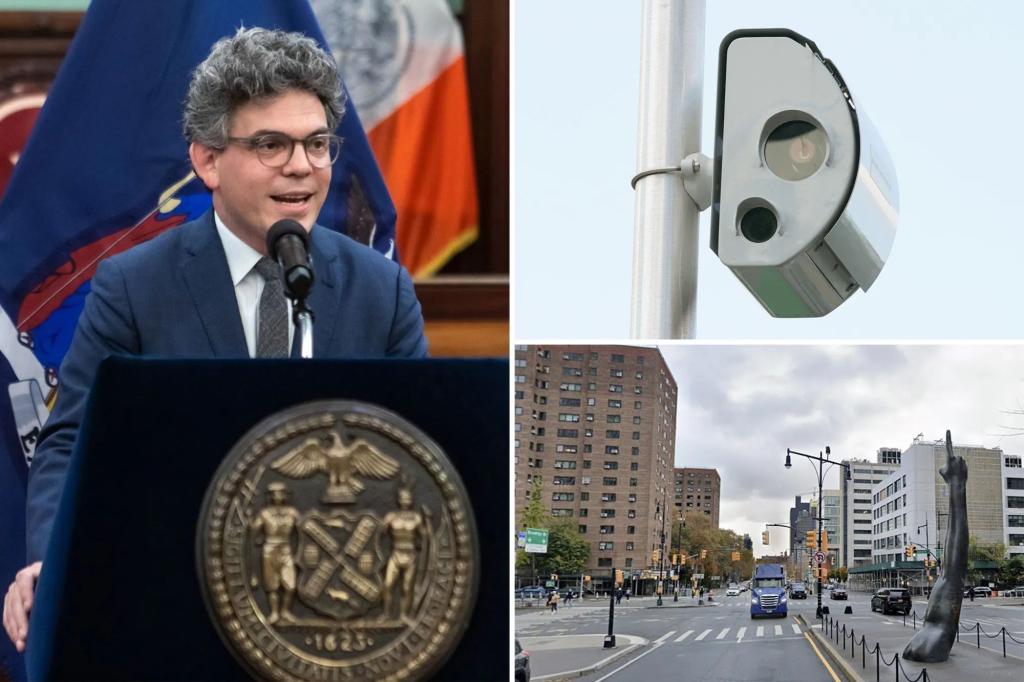New York City’s Noise Camera Initiative: A $1.7 Million Effort to Restore Peace
In recent years, New York City has quietly deployed a network of “noise cameras” to combat the growing problem of excessive urban noise. These surveillance devices, now numbering a dozen across the boroughs, have issued more than $1.7 million in fines for violations ranging from blaring car stereos to modified motorcycle exhausts. The program, which began as a pilot in June 2021 before gaining full approval from the City Council in 2022, represents the city’s technological response to what many residents describe as a post-pandemic surge in disruptive noise. “The only complaint I’ve gotten from constituents is that they want more [of the cameras] on their block,” noted Brooklyn City Councilman Lincoln Restler, who recently allocated $40,000 from his office budget to install the newest camera on Tillary Street near the Brooklyn and Manhattan bridges.
The noise situation in New York has deteriorated noticeably in recent years, according to both officials and residents. Councilman Restler points to a troubling increase in reckless driving, modified mufflers, and excessively loud music systems that “just became more prevalent” following the COVID-19 pandemic. These disturbances, combined with the constant drone of traffic and aggressive honking, have significantly undermined quality of life across multiple neighborhoods. The problem is particularly acute in high-traffic areas like Tillary Street, where hundreds of 311 complaints about loud music alone have been logged since 2010, with an additional 50 complaints specifically about excessive honking. “We all live in New York City, we understand that there’s a certain level of noise that we have to deal with, but it should be within reason,” Restler explained, voicing the frustration of many New Yorkers who find themselves unable to hold conversations on sidewalks or enjoy peace in their own apartments.
Operating much like the city’s speed and red-light enforcement cameras, these noise-monitoring devices capture images of offending vehicles’ license plates when their sensitive decibel meters register sounds exceeding the city’s noise code threshold of 85 decibels. After capturing violations, Department of Environmental Protection staff review the evidence before issuing summonses that start at $800 and can escalate to $2,500 for repeat offenders. This technological approach has proven remarkably effective, with the program having issued 2,037 summonses totaling nearly $1.8 million in fines as of the latest reports. More than $750,000 in fines were issued this year alone, demonstrating the ongoing and perhaps worsening nature of the noise problem. While the city has only collected about $610,154 of the total fines thus far, the program represents a significant revenue stream in addition to its quality-of-life benefits.
The city maintains a strategic silence about the exact locations of these noise cameras, though it’s known they have been installed at rotating locations throughout Manhattan, Brooklyn, Queens, and the Bronx—with Staten Island being the only borough not yet included in the program. The cameras have appeared in diverse neighborhoods ranging from Midtown and East Harlem in Manhattan to Long Island City in Queens and Bay Ridge in Brooklyn. This geographic diversity reflects the widespread nature of the noise pollution problem across the city’s varied communities. The health implications of this initiative extend beyond mere annoyance; experts warn that sustained exposure to loud noises above the city’s threshold can lead to elevated stress levels, sleep disturbances, and even cardiovascular problems, making this not just a quality of life issue but a public health concern as well.
Despite the program’s apparent success and popularity among noise-weary residents, its expansion faces budgetary obstacles. Even with a 2024 law mandating at least five cameras in each borough no later than September 30, additional cameras are not funded in the city’s most recent budget. This funding gap creates a discrepancy between legislative intent and practical implementation that frustrates advocates like Councilman Restler, who views the cameras as “an effective model for how we can rein in inconsiderate drivers and cyclists and motorcyclists who are causing a great deal of disruption and inconvenience in our community.” The councilman has expressed hope that the next mayoral administration will prioritize compliance with the law by installing at least five new cameras annually across the city, suggesting that current leadership may not be fully committed to the program despite its revenue-generating potential and quality-of-life benefits.
The noise camera initiative represents a modern technological solution to an age-old urban problem that has been exacerbated by contemporary vehicle modifications and powerful sound systems. As cities worldwide grapple with similar noise pollution challenges, New York’s approach offers a potential model for automated enforcement that combines deterrence with documentation. While some might question the surveillance aspects of such technologies, the overwhelmingly positive community response suggests that many urban dwellers are willing to accept additional monitoring in exchange for quieter streets and more peaceful homes. The program’s ultimate success will likely depend not just on the effectiveness of the cameras themselves, but on the city’s commitment to expanding their coverage, consistently enforcing violations, and using the resulting data to inform broader policy decisions about urban soundscapes and their impact on public health and wellbeing in one of the world’s most vibrant—and noisy—metropolises.


